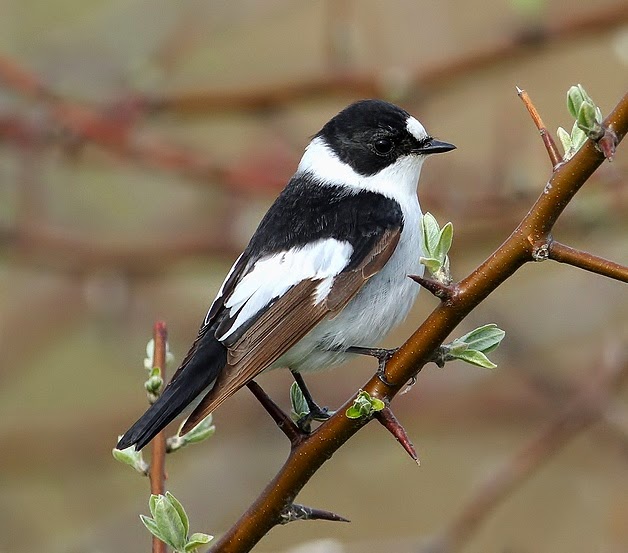 |
| Photo by Andrej Chudy (Flickr) |
Common name:
collared flycatcher (en); papa-moscas-de-colar (pt); gobemouche à collier (fr); papamoscas collarino (es); halsbandschnäpper (de)
Taxonomy:
Order Passeriformes
Family Muscicapidae
Range:
This species breeds in eastern Europe, as far west as north-eastern France and Italy, as far north as Lithuania and Belarus, and south to Bulgaria and east into near Russia as far as the Volga river. They migrate south to winter from southern Kenya and Uganda to Zimbabwe.
Size:
These birds are 12-14 cm long and have a wingspan of 22-124 cm. They weigh 10,5-16 g.
Habitat:
The collared flycatchers breeds mainly in temperate forests, favouring open forests and forest edges, but also use rural gardens, plantations, arable land and urban areas. They winter in dry savannas.
Diet:
During the breeding season they feed mainly on caterpillars, but also take other arthropods such as butterflies and moths, ants, and beetles. They hunt either by sallying out from a perch or by picking their prey from the foliage or the ground.
Breeding:
Collared flycatchers are mostly monogamous and breed in April-July. They nest in a natural or artificial hole in a tree, wall, or building, up to 15 m above the ground. There the female lays 5-7 eggs which she incubates alone for 12-14 days. The chicks are fed by both parents and fledge 15-18 days after hatching.
Conservation:
IUCN status – LC (Least Concern)
This species has a very large breeding range and a global population estimated at 4,2-7,2 million individuals. Data from 21 European countries indicate the population has undergone a moderate increase over the last 3 decades.







